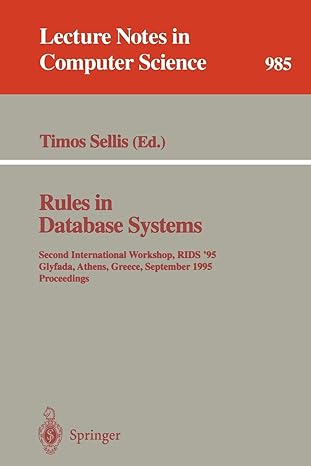Answered step by step
Verified Expert Solution
Question
1 Approved Answer
INTRODRUTION: Mobile Cloud Computing ( MCC ) is outlined as a revolutionary combination of cloud and mobile technologies that offers advantages like increased computing power
INTRODRUTION:
Mobile Cloud Computing MCC is outlined as a revolutionary combination of cloud and mobile technologies that offers advantages like increased computing power and scalability but also poses security risks. It shows the role that cloud computing serves in providing infrastructure and stresses the importance of the integrity, confidentiality, and availability of data in MCC To reduce security threats, secrecy techniques, and cryptography are essential security measures. The purpose of the present study is to explore these problems, possible solutions, and the creation of trends in MCC security practices to improve data security and confidentiality in mobile cloud computing.
Mobile Cloud Computing The aim of Cloud computing for mobile devices MCC is to boost processing speed, data storage, and computational capacity by mixing cloudbased computing with mobile devices. It makes use of the clouds resources to overcome the limitations of handheld devices and provide consumers. Mobile Cloud Computing MCC is outlined as a revolutionary combination of cloud and mobile technologies that offers advantages like increased computing power and scalability but also poses security risks. It shows the role that cloud computing serves in providing infrastructure and stresses the importance of the integrity, confidentiality, and availability of data in MCC To reduce security threats, secrecy techniques, and cryptography are essential security measures. The purpose of the present study is to explore these problems, possible solutions, and the creation of trends in MCC security practices to improve data security and confidentiality in mobile cloud computing. Cloud computing for mobile devices MCC is to boost processing speed, data storage, and computational capacity by mixing cloudbased computing with mobile devices. It makes use of the clouds resources to overcome the limitations of handheld devices and provide consumers.
Background:
As a development and extension of Cloud Computing and Mobile Computing, Mobile Cloud Computing, as a new phrase, has been devised since To help us grasping better understanding of Mobile Cloud Computing, lets start from the two previous techniques: Mobile Computing and Cloud Computing.
A Mobile Computing
Mobility has become a very popular word and rapidly increasing part in todays computing area. An incredible growth has appeared in the development of mobile devices such as smartphone, PDA, GPS Navigation, and laptops with a variety of mobile computing, networking, and security technologies.
In addition, with the development of wireless technology like WiMAX, Ad Hoc Network and WIFI, users may be surfing the Internet much easier but not limited by the cables as before.
Thus, those mobile devices have been accepted by more and more people as their first choice of working and entertainment. in their daily lives
B Cloud Computing
In the era of PC many users found that the PCs they bought. years ago, cannot keep pace with the development of software nowadays, they need a higher speed CPU, a larger capacity hard disk, and a higher performance Operation System OS
That is the magic of Moors Law which urges user upgrading. their PCs constantly, but never ever overtaken the development. of techniques. Thus, a term called Cloud Computing burst upon our lives. Cloud Computing has become a popular phrase since However, there is no consensual definition on what a Cloud Computing or Cloud Computing System is due to dozens of developers and organizations described it from different perspectives.
Literature Review:
Overview of Cloud Computing:
Cloud computing offers a modern alternative to managing physical data centres. It allows for the leasing of hardware and software as needed, which transforms capital expenses into operational expenses. Cloud environments provide an accessible online portal for users to manage various resources such as compute, storage, network, and applications.
Types of Cloud Models
Public Cloud: All hardware and software are managed by the vendor, reducing the maintenance burden on the user.
Private Cloud: Mimics the public cloud but is hosted within an organizations own datacentre, keeping the maintenance responsibilities inhouse.
Hybrid Cloud: Combines public and private clouds, allowing for flexible hosting of workloads.
Advantages of Cloud Computing:
Reduces the procurement cycle for deploying new hardware from weeks to minutes.
Offers scalability and flexibility in resource management.
Provides cost efficiencies, especially with the ability to scale resources on demand.
paraphase the word
Step by Step Solution
There are 3 Steps involved in it
Step: 1

Get Instant Access to Expert-Tailored Solutions
See step-by-step solutions with expert insights and AI powered tools for academic success
Step: 2

Step: 3

Ace Your Homework with AI
Get the answers you need in no time with our AI-driven, step-by-step assistance
Get Started


